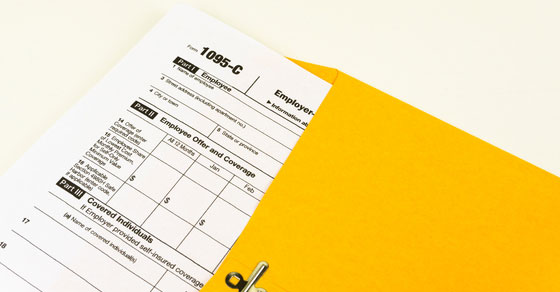
Is Your Business Required to Report Employee Health Coverage?
As you’re aware, certain employers are required to report information related to their employees’ health coverage. Does your business have to comply, and if so, what must be done?
Basic rules
Certain employers with 50 or more full-time employees (called “applicable large employers” or ALEs) must use Forms 1094-C and 1095-C to report the information about offers of health coverage and enrollment in health coverage for their employees. Specifically, an ALE uses Form 1094-C to report summary information for each employee and to transmit Forms 1095-C to the IRS. A separate Form 1095-C is used to report information about each employee. In addition, Forms 1094-C and 1095-C are used to determine whether an employer owes payments under the employer shared responsibility provisions (sometimes referred to as the “employer mandate”).
Under the mandate, an employer can be subject to a penalty if it doesn’t offer affordable minimum essential coverage that provides minimum value to substantially all full-time employees and their dependents. Form 1095-C is also used in determining eligibility of employees for premium tax credits.
Information reported
On Form 1095-C, ALEs must report the following for each employee who was a full-time employee for any month of the calendar year:
- The employee’s name, Social Security number and address,
- The Employer Identification Number,
- An employer contact person’s name and phone number,
- A description of the offer of coverage (using a code provided in the instructions) and the months of coverage,
- Each full-time employee’s share of the coverage cost under the lowest-cost, minimum-value plan offered by the employer, by calendar month, and
- The applicable safe harbor (using one of the codes provided in the instructions) under the employer shared responsibility or employer mandate penalty.
If an ALE offers health coverage through an employer’s self-insured plan, the ALE also must report more information on Form 1095-C. For this purpose, a self-insured plan also includes one that offers some enrollment options as insured arrangements and other options as self-insured.
If an employer provides health coverage in another manner, such as through an insured health plan or a multiemployer health plan, the insurance issuer or the plan sponsor making the coverage available will provide the information about health coverage to enrolled employees. An employer that provides employer-sponsored self-insured health coverage but isn’t subject to the employer mandate, isn’t required to file Forms 1094-C and 1095-C and reports instead on Forms 1094-B and 1095-B for employees who enrolled in the employer-sponsored self-insured health coverage.
On Form 1094-C, an employer can also indicate whether any certifications of eligibility for relief from the employer mandate apply.
Be aware that these reporting requirements may be more complex if your business is a member of an aggregated ALE group or if the coverage is provided through a multiemployer plan.
W-2 reporting
Note: Employers also report certain information about health coverage on employees’ W-2 forms. But it’s not the same information as what’s reported on 1095-C. The information on either form doesn’t cause excludable employer-provided coverage to become taxable to employees. It’s for informational purposes only.
The above is a simplified explanation of the reporting requirements. Contact us with questions or for assistance in complying with the requirements.
© 2022
